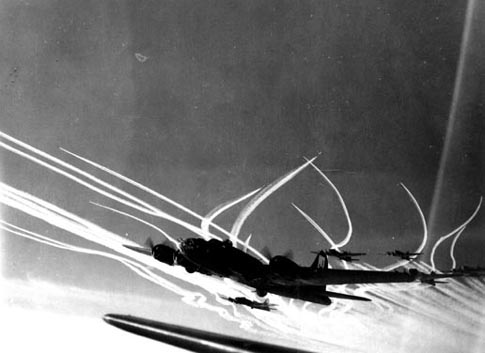OVERVIEW OF THE EIGHT AIR FORCE
CAMPAIGN IN EUROPE

Since 1939 when the war began, Britain fought back with its bombers. With the fall of France in 1940 and the heavy losses during the Battle of Britain the British bombers only flew under the cover of darkness.The U.S. entered the war in 1942, but did not fly bombing missions until August. Then, with Operation Torch, air support was needed in North Africa. (November 8, 1942). After much debate about daylight raids Winston Churchill liked the idea of hitting the Germans around the clock.
